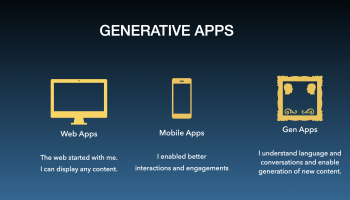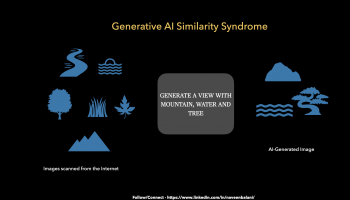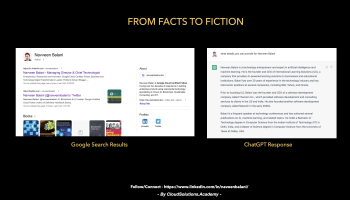The emergence of generative artificial intelligence (AI) is revolutionizing the tech industry, creating unprecedented opportunities for innovation across all roles. From design to deployment, the impact of generative AI is reshaping the skill sets required for tech professionals. This blog post expands on our roadmap for beginners interested in generative AI, incorporating additional critical roles and frameworks that are becoming indispensable in this rapidly evolving field.
For All: Understanding the Fundamentals
Regardless of your specific role, beginning with a solid understanding of generative AI is essential. This includes:
- Foundational Knowledge: Grasping the core principles of generative AI, such as neural networks, machine learning (ML) models, and the difference between generative and discriminative models.
- Key Models and Their Uses: Familiarize yourself with leading models, such as GPT (for text generation) and DALL-E (for image creation).
- Broadening Your Toolset: It’s essential for professionals to explore and become proficient with a diverse range of frameworks and tools tailored to their specific roles. For backend engineers, diving into LangChain can unlock the potential of large language models (LLMs) for application development. UI/UX designers, on the other hand, might focus on leveraging design-centric tools like Adobe Sensei for AI-powered creativity enhancements. This tailored approach ensures that, regardless of your area of expertise, you’re equipped to integrate generative AI into your workflow effectively
- Ethical and Responsible AI Use: Recognizing the importance of ethical AI development and deployment, including considerations for fairness, privacy, and bias.
Role-Specific Learning Paths
Here is a beginner and advanced guide for some of the various role types-
For UI/UX Designers: Enhancing Creativity with AI
Beginnings:
- Learn About AI-Driven Design Tools: Explore tools like Adobe Firefly or DALL-E that can generate images, icons, and layouts.
- Understand the Basics of AI Integration in Design: Study how AI can automate repetitive tasks and provide design inspiration.
Advanced:
- Prototype With AI: Use AI to create quick prototypes or enhance user experience through personalized design elements.
- Collaborate with Developers: Learn to work closely with developers to integrate AI-generated assets into applications seamlessly.
For Backend Engineers: Automating and Innovating
Beginnings:
- Explore AI APIs: Understand how to use APIs provided by AI models for tasks like content generation, summarization, or code suggestions.
- Learn About AI Model Integration: Start with simple integrations of pre-trained models into your applications for enhanced functionality.
Advanced:
- Custom AI Model Training: Dive deeper into training your models for specific tasks or improving efficiency in backend processes.
- Optimize AI Performance: Learn about optimizing AI model performance and managing resources effectively in backend systems.
For Frontend Developers: Bringing AI to the User Interface
Beginnings:
- AI-Powered Components: Understand how to implement AI-driven components, such as chatbots or personalized content suggestions, into web interfaces.
- Responsive Design with AI: Learn about tools and frameworks that utilize AI to create responsive and adaptive designs.
Advanced:
- Interactive AI Features: Develop skills to create interactive AI features that enhance user engagement and experience.
- Performance Optimization: Master the techniques for optimizing the performance of AI-driven features on the front end, ensuring smooth user interactions.
For DevOps/MLOps Engineers: Streamlining Generative AI Operations
Beginnings:
- Choose Your Approach: Whether adopting generative AI APIs like GPT-4 or Gemini for out-of-the-box solutions or building and fine-tuning your own models, understanding the distinction is crucial. This decision informs the complexity and structure of your deployment and maintenance strategies.
- Pipeline Design Based on Approach: Tailor your deployment pipeline to fit the chosen approach. For API integrations, emphasize secure, scalable API calls and efficient error handling. For custom models, focus on automation in training, versioning, and deploying models, using tools that support these specific needs.
Advanced:
- Optimize for Your Chosen Strategy: For direct API use, concentrate on optimizing API usage to balance cost and performance. For custom models, delve into advanced MLOps practices like continuous training and model monitoring to ensure your application remains effective and up-to-date.
- Resource Allocation and Scaling: Implement dynamic scaling solutions to efficiently manage resources, particularly for custom model deployments that may require significant computational power. Use tools that offer real-time monitoring and auto-scaling capabilities to maintain performance without overshooting budget.
For Full Stack Developers in Generative AI
Beginnings:
- Cross-Disciplinary Fundamentals: Gain a solid understanding of both frontend and backend aspects of AI-driven applications.
- Frameworks and Tools: Learn about specific frameworks like LangChain for integrating AI into full-stack development.
Advanced:
- End-to-End AI Application Development: Develop the capability to design, build, and deploy comprehensive AI solutions that leverage generative models for both client and server-side tasks.
- Innovative AI Features Integration: Focus on integrating cutting-edge AI features that enhance user engagement and provide novel functionalities
For AI Architects: Designing the Foundation of Generative AI Systems
Beginnings:
- Grasp the Basics of AI Architecture: Learn the fundamental concepts of designing architectures for AI systems, focusing on generative AI models. Understand different architectural patterns, scalability, and the integration of AI models into existing systems.
- Explore Generative AI Models: Learn the specifics of various generative AI models, such as GPT and DALL-E, and their applications. Gain an understanding of how these models can be incorporated into broader systems to solve real-world problems.
Advanced:
- Design for Scalability and Efficiency: Develop expertise in designing AI systems that are not only scalable but also efficient in handling the heavy computational loads characteristic of generative AI models. This includes optimizing data pipelines, model serving, and ensuring the architecture supports continuous learning and adaptation.
- Ethical and Responsible AI Design: Embed ethical considerations directly into the architectural design process. This involves ensuring privacy by design, transparency in how AI models make decisions, and the ability to audit and explain model behaviors. Architects should advocate for and implement designs that mitigate biases and ensure fair and ethical use of AI.
For Project Managers and Ethical Governance Officers: Leading and Ensuring Ethical AI Projects
Beginnings:
- Understanding AI Project Lifecycle: Acquire a comprehensive understanding of the AI project lifecycle, from conceptualization through to deployment. Grasp the unique challenges at each stage, including those specific to generative AI, like data provenance and model bias.
- AI Tools for Project Management: Investigate AI-enhanced project management tools that offer functionalities beyond traditional software, such as predictive analytics for risk assessment and resource planning. These tools can help identify potential ethical and operational issues early on.
Advanced:
- Managing Cross-Disciplinary Teams: Hone your skills in leading diverse teams that comprise AI experts, developers, designers, and ethical governance officers. Foster an environment of collaboration and ensure that ethical considerations are integrated into the project from the outset.
- Strategic Planning with AI: Master the art of strategic planning for projects with AI components, with a keen eye on ethical implications, data governance, and long-term maintenance. This involves not only resource allocation and project scheduling but also embedding ethical AI principles and practices into the project lifecycle.
While project managers typically oversee the practical aspects of project delivery, the evolving landscape of AI demands an expanded focus. Ethical governance, particularly in projects involving generative AI, is becoming increasingly critical. This necessitates project managers to:
- Embed Ethical Considerations into Every Stage: From the ideation phase, ethical considerations should be paramount. They should guide the project’s direction and ensure compliance with regulatory standards and societal expectations.
- Collaborate Closely with Ethical Governance Officers: In organizations where this role exists separately, project managers should work in tandem with ethical governance officers to align project objectives with ethical guidelines, ensuring that AI technologies are used responsibly.
Summary
As we navigate the transformative wave of generative AI, the implications for professionals across the tech industry are both profound and expansive. From enhancing creative processes in design to revolutionizing backend efficiencies and ensuring ethical deployment, the potential of generative AI is vast. This journey demands not only a deep understanding of the technology but also a commitment to ethical practices and continuous innovation.
The roadmap provided offers a glimpse into the multifaceted roles that contribute to the successful integration of generative AI, highlighting the need for cross-disciplinary collaboration, strategic planning, and ethical governance. As the field evolves, embracing these challenges and opportunities with a forward-thinking mindset will be key to unlocking the full potential of generative AI in creating more intelligent, efficient, and responsible technologies.
In essence, the future of tech in the age of generative AI demands a harmonious approach that seamlessly integrates innovation with ethical responsibility, while emphasizing the importance of continuous learning to ensure that we harness the power of AI for the benefit of all.




